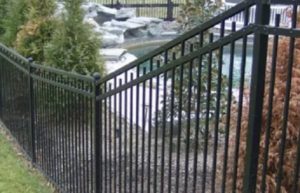
Here’s our comparison of metal fencing and wood fencing.
Considering how much maintenance we put into the rest of our yards, you may not have new fence installation at the top of your mind. With all the benefits of fencing, including containing pets and kids, adding security and privacy, and increasing your home’s curb appeal, it’s no wonder that so many people end up biting the bullet on installing a new fence. What isn’t always clear is what material you should use, however, as many people are stuck between two common options: metal fencing and wood fencing.
Each material has its own advantages, so it’s a question of what suits your particular needs better. Here’s our comparison of metal fencing and wood fencing.
Appearances
While wood may feel nostalgic and traditional, it also offers rich earthy colors that can go with just about any home style. If you’re looking for something that’s really out there, you can also paint or stain wood fencing to give it a look that’s more specific to your sensibilities.
On the other hand, metal fencing is sometimes perceived as cold and unwelcoming, which can make it perfect for security fencing. However, modern metal fences are incredibly flexible and you can use a number of different metals and accessories to create your own style.
Daily Performance
Due to the nature of wood, wood fencing will often absorb moisture, causing rot and warpage. If you don’t perform adequate maintenance, you can expect a wood fence to deteriorate pretty quickly. Metal fencing on the other hand offers amazing strength and will naturally stand up to the weather much better than a wood fence might.
Regular Maintenance
If you want something you won’t need to maintain regularly, you’re likely looking for something more durable like metal fencing. Most metal fences require very little painting or upkeep due to being galvanized and available in all kinds of finished via powder coatings that also prevent rust. Wood fences will need a bit more, demanding a refinishing every few years if you really want to maintain its look.
Installation Process
Wood fencing materials are usually lighter and easier to install, though since wood can expand and shrink because of moisture, there are some extra considerations you need to factor in. In contrast, metal is a heavy and rigid material that can be difficult for DIY installers to work with. Wood fencing is generally considered to be much easier to install.
The post Comparing Metal Fencing With Wood Fencing appeared first on Hercules Fence.